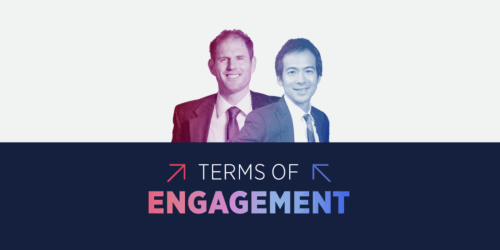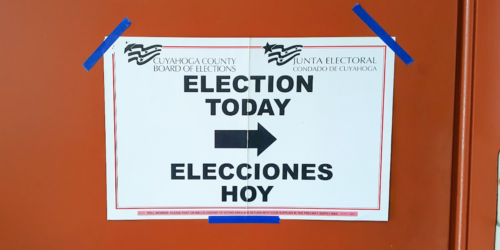Technology and innovation have transformed every part of society, including our electoral experiences. Campaigns are spending and doing more than at any other time in history. Ever-growing war chests fuel billions of voter contacts every cycle. Campaigns now have better ways of scaling outreach methods and offer volunteers and donors more efficient ways to contribute time and money. Campaign staff have adapted to vast changes in media and social media landscapes, and use data analytics to forecast voter turnout and behavior.
Yet despite these unprecedented investments in mobilizing voters, overall trust in electoral health, democratic institutions, voter satisfaction, and electoral engagement has significantly declined. What might we be missing?
In software development, the concept of user experience (UX) is fundamental to the design of any product or service. It’s a way to think holistically about how a user interacts with technology. It ensures that products and services are built with the users’ actual needs, behaviors, and expectations in mind, as opposed to what developers think users want. UX enables informed decisions based on how the user will interact with the system, leading to improved design, more effective solutions, and increased user satisfaction. Good UX design results in easy, relevant, useful, positive experiences. Bad UX design leads to unhappy users.
This is not how we normally think of elections. Campaigns measure success through short-term outputs — voter contacts, fundraising totals, issue polls, ad impressions — and, ultimately, election results. Rarely do they evaluate how individuals experience this as a singular, messy, democratic process. Each campaign, PAC, nonprofit, and volunteer group may be focused on their own goal, but the voter experiences it all at once. By the time they’re in line to vote, they’ve been hit with a flood of outreach — spammy texts from unfamiliar candidates, organizers with no local ties, clunky voter registration sites, conflicting information, and confusing messages, even from campaigns they support. Political teams can point to data that justifies this barrage, but the effectiveness of voter contact has been steadily declining since 2008. Intuitively, we know this approach has long-term costs. To address this, let’s evaluate the UX of an election cycle from the point of view of the end user, the everyday citizen.
Specifically, how might we define the UX of an election cycle: the voter experience (VX)? A VX lens could help us see the full impact of the electoral cycle from the perspective that matters most: the voters’.
For example, what if we thought about elections in terms of questions like these?
- How do voters experience an election cycle, from start to finish?
- How do voters perceive their interactions with political campaigns?
- What aspects of the election cycle do voters enjoy? What do they dislike? Do citizens currently feel fulfilled by voting?
- If voters “tune out” of politics, what part of the process has made them want to not pay attention?
- What experiences decrease the number of eligible citizens who register and vote?
- Are we able to measure the cumulative impacts of political content interactions over the course of multiple election cycles?
- Can polls or focus groups help researchers learn about longitudinal sentiment from citizens as they experience multiple election cycles?
- If so, what would we want to learn in order to bolster democratic participation and trust in institutions?
Thinking in terms of VX can help answer these questions. Moreover, researching and designing around VX could help identify additional metrics, beyond traditional turnout and engagement numbers, that better reflect the collective impact of campaigning: of all those voter contact and persuasion efforts combined.
This isn’t a radically new idea, and earlier efforts to embed UX design into electoral work yielded promising early benefits. In 2020, a coalition of political tech builders created a Volunteer Experience program. The group held design sprints for political tech tools, such as canvassing apps and phone banking sites. Their goal was to apply UX principles to improve the volunteer user flow, enhance data hygiene, and improve volunteer retention. If a few sprints can improve the phone banking experience, imagine the transformative possibilities of taking this lens to the VX as a whole.
If we want democracy to thrive long-term, we need to think beyond short-term wins and table stakes. This isn’t about replacing grassroots organizing or civic action with digital tools. Rather, it’s about learning from UX research methodology to build lasting, meaningful engagement that involves both technology and community organizing. Often, it is indeed local, on-the-ground organizers who have been sounding the alarm about the long-term effects of prioritizing short-term tactics. A VX approach may provide additional data to bolster their arguments.
Learnings from a VX analysis of election cycles could also guide the design of new programs that not only mobilize voters (to contribute, to campaign for their candidates, and to vote), but also ensure that the entire process of voting, post-election follow-up, and broader civic participation is as accessible, intuitive, and fulfilling as possible. Better voter UX will lead to more politically engaged citizens and higher voter turnout.
VX methodology may help combine real-time citizen feedback with centralized decision-making. Moving beyond election cycles, focusing on the citizen UX could accelerate possibilities for citizens to provide real-time feedback, review the performance of elected officials and government, and receive help-desk-style support with the same level of ease as other everyday “products.” By understanding how people engage with civic life over time, we can better design systems for citizens that strengthen participation, trust, and accountability at every level.
Our hope is that this approach, and the new data and metrics uncovered by it, will support shifts that help restore civic participation and strengthen trust in institutions. With citizens oriented as the central users of our democratic systems, we can build new best practices for fulfilling civic infrastructure that foster a more effective and inclusive democracy.
The time for this is now. Despite hard-fought victories and lessons learned from failures, many people working in politics privately acknowledge a hard truth: our current approach isn’t working. Every two years, people build campaigns, mobilize voters, and drive engagement, but they are held back by what they don’t understand about the long-term impact of their efforts. VX thinking can help solve that.
Bruce Schneier is a faculty affiliate at the Ash Center and a Lecturer in Public Policy at Harvard Kennedy School.
Hillary Lehr is a policy fellow at the Ash Center and the CEO and co-founder of Quiller, the first generative AI content tool designed specifically for electoral campaigns and nonprofits.
The views expressed in this article are those of the author(s) alone and do not necessarily represent the positions of the Ash Center or its affiliates.



